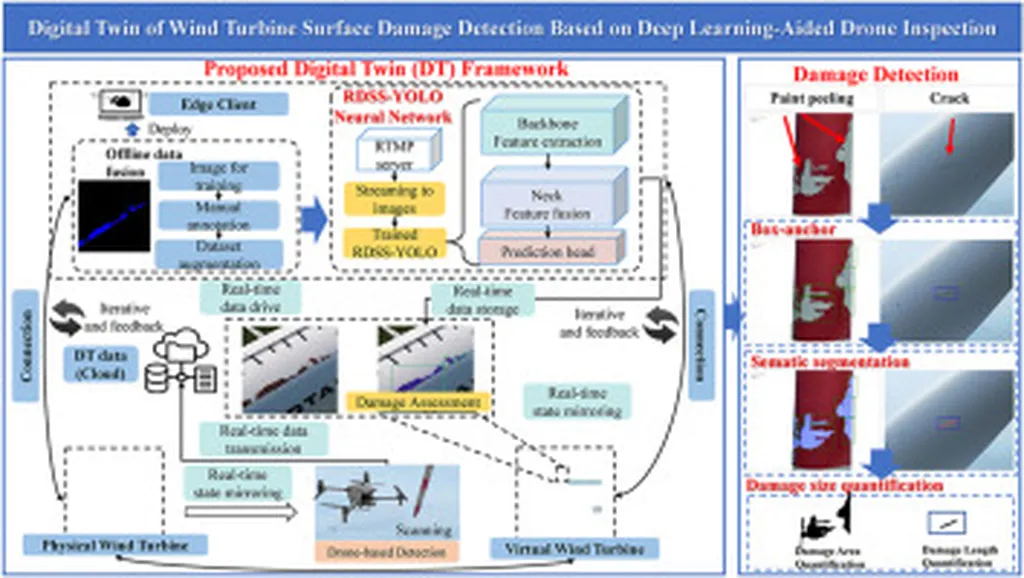In the relentless pursuit of safer and more efficient nuclear fusion reactors, a team of researchers led by Youzhi Xu from the Lab of Locomotion Bioinspiration and Intelligent Robots at Nanjing University of Aeronautics and Astronautics has developed a groundbreaking digital twin system for inspection UAVs. This innovation, detailed in a recent study published in the journal *Nuclear Engineering and Technology*, promises to revolutionize the way we maintain and inspect these complex facilities.
Nuclear fusion reactors operate in extreme environments, making regular inspections and maintenance a daunting task. Traditional methods often fall short due to the harsh conditions and the intricate internal structures of these reactors. Xu and his team have tackled this challenge head-on by proposing an intelligent Unmanned Aerial Vehicle (UAV) inspection system based on a five-dimensional Digital Twin (DT) model. This system establishes a three-layer architecture—“cognitive-digital twin integration-intelligent decision-making”—to achieve high-fidelity virtual mapping of the UAV and its environment.
The heart of this system lies in its trajectory tracking algorithm, which leverages Nonlinear Model Predictive Control (NMPC). This algorithm integrates dynamic disturbance observers and time-varying safety constraints to resolve trajectory accuracy and obstacle avoidance coupling challenges. As Xu explains, “The key to our system’s success is its ability to seamlessly integrate perception, decision-making, and execution in real-time, ensuring robust performance even in the most complex environments.”
To validate their system, the researchers developed a ROS-Unreal Engine co-simulation framework and a three-level digital twin architecture (“L0-L1-L2”). Through hardware-in-the-loop (HITL) simulations and synchronous mapping experiments, they demonstrated the system’s impressive capabilities. The results showed a Root-Mean-Square-Error (RMSE) of 0.092 meters for virtual-real pose mapping and trajectory tracking accuracy within ±0.15 meters. This level of precision is a game-changer for the energy sector, offering a high-precision, low-risk solution for the intelligent maintenance of nuclear fusion facilities.
The implications of this research are far-reaching. As nuclear fusion continues to be a cornerstone of the future energy landscape, the ability to perform accurate and efficient inspections will be crucial. Xu’s digital twin system not only enhances safety but also reduces downtime and maintenance costs, making fusion energy more viable and attractive for commercial applications.
The study, published in *Nuclear Engineering and Technology*, underscores the potential of digital twin technology to transform the energy sector. By providing a robust and reliable inspection system, this research paves the way for more advanced and efficient nuclear fusion reactors, ultimately contributing to a cleaner and more sustainable energy future.
As the energy sector continues to evolve, innovations like Xu’s digital twin system will play a pivotal role in shaping the future of nuclear fusion. The ability to perform precise and efficient inspections in extreme environments is a significant step forward, offering a glimpse into a future where fusion energy is both safe and commercially viable.

